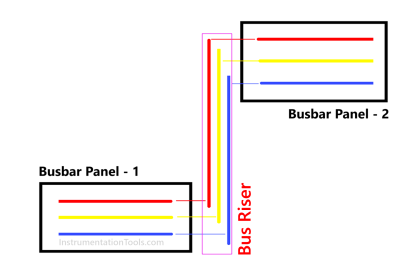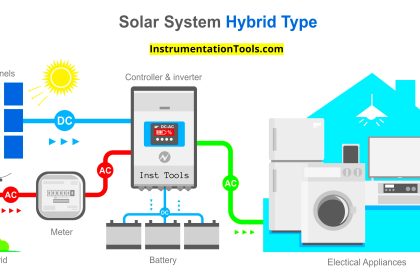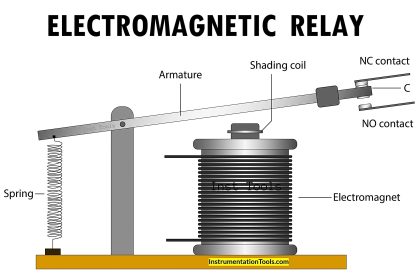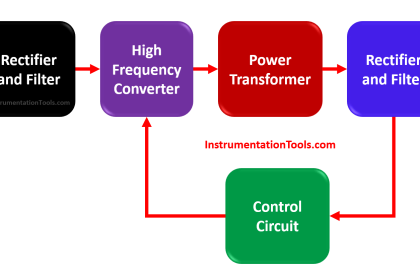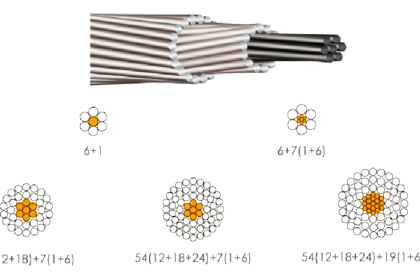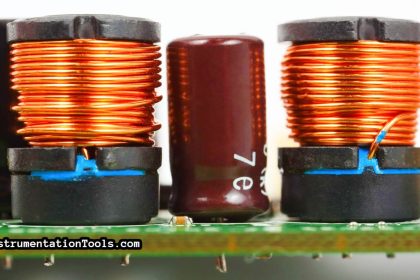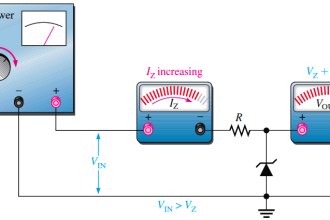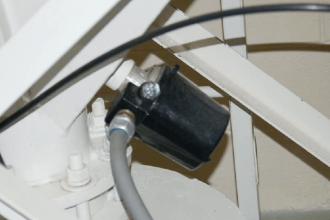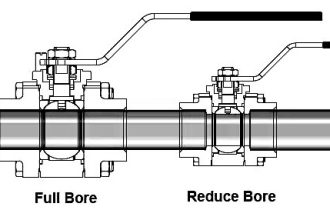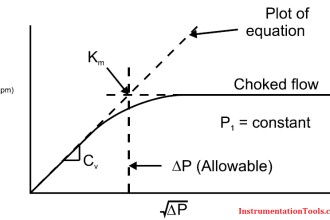Electric motors are very rugged and robust pieces of machinery, they can operate their whole life without any troubles, some types of electric motors are almost maintenance-free apart from some minor checks, but these checks are a key element in keeping the motor running with the highest efficiency and prolonging the motor lifetime.
In this article, we will mention the basic and important regular checks and maintenance that should be performed on the motor to ensure that the motor wouldn’t face any failures that would affect its performance and by extension your process.
Contents:
- Importance of motor periodic checks.
- Different types of motor maintenance.
- Examples of minor trouble that can become fatal for motors
- Preventive Motor recommended regular checks
- Predictive maintenance of motors
- Examples of predictive maintenance.
- Conclusion.
Importance of Motor Periodic Checks
Induction motors are the most commonly used type of electric motor. Its simple and rugged construction makes it require less maintenance than for example DC motors.
Induction motors can be considered maintenance-free; almost any induction motor failure can be traced back to reasons that can be eliminated by following simple and minor checks.
Reasons like bad ventilation, loosened terminals, and over-temperature can all be prevented if regular checks on the electric motor are being done.
These regular checks are very important for the well-being of your motor and the efficiency of its operation; it also has a direct effect on the performance of your process, and a failure of the electric motor will most likely cause your machine to stop.
This is another cost and loss added to the cost of repairing or maybe even replacing your motor.
Different Types of Motor Maintenance
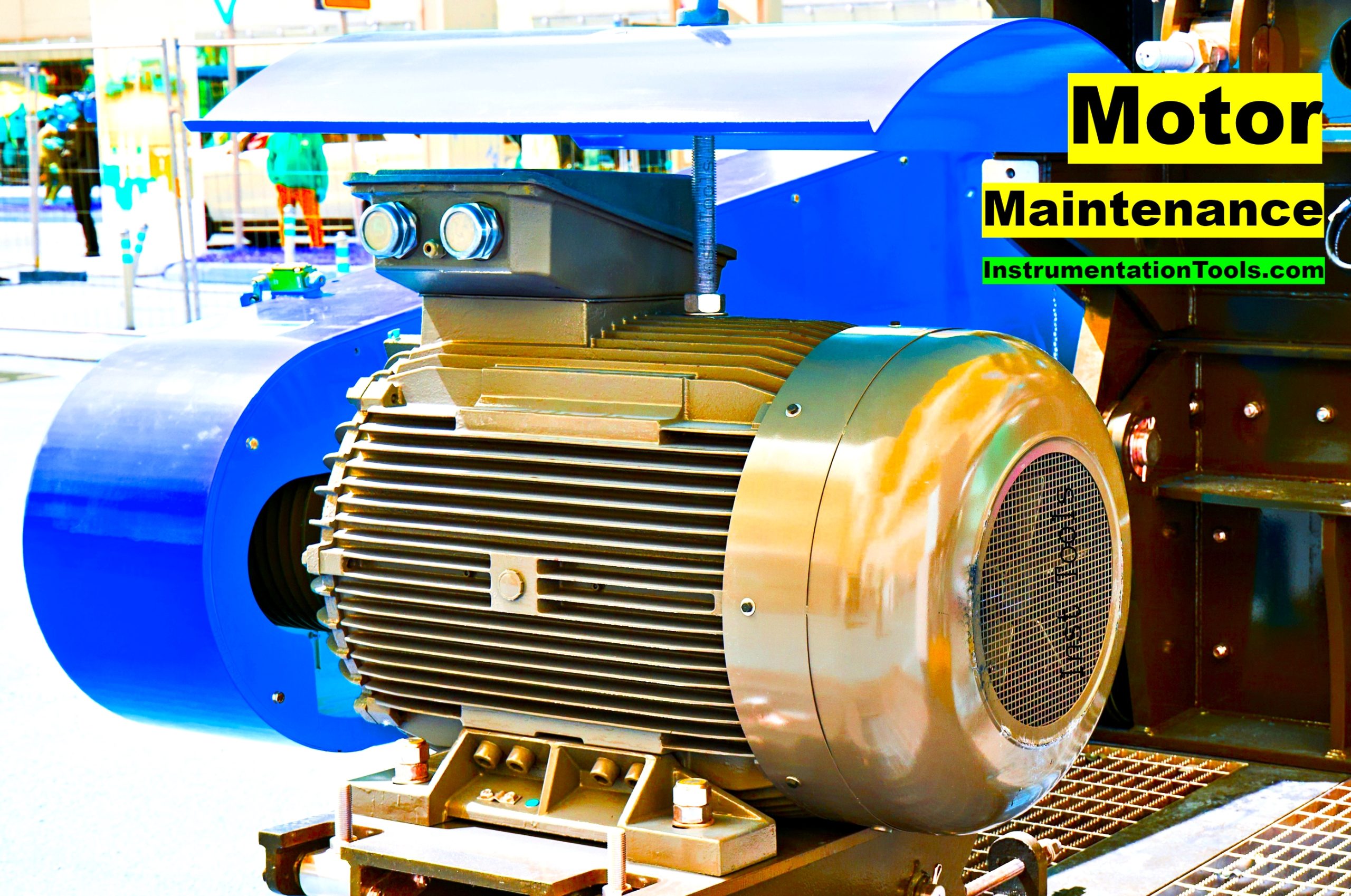
There are three different maintenance types for electric motors; these are preventive maintenance, predictive maintenance, and corrective maintenance.
Preventive Maintenance
In preventive maintenance, minor checks and small maintenance aim to keep the motor running at the highest efficiency and to reduce any troubles that might cause failure to the motor.
Predictive Maintenance
In predictive maintenance, we use condition monitoring tools and techniques to monitor the performance of the motor and use these data for observing any patterns that can lead to future failures of our motor.
Reactive Maintenance
In reactive maintenance, you don’t want to have it because it means that a failure to your motor has already happened, reactive maintenance is the repairs done to the motor after facing a failure.
Reactive Maintenance is the most costly maintenance because it will probably cause an unplanned stop to your machine not to mention the cost of repairing the motor or in the worst cases replacing it completely.
Examples of Minor Troubles that can become Fatal for Motors
Following are some minor troubles that can easily be avoided and also can be very fatal to your motor if not properly handled:
Motor Cooling
This is a very important check for your motor, high temperature can cause a lot of problems for your motor, and it might even lead to motor windings failure.
That is why you should ensure sufficient cooling for your motor, and periodically check the well-being and operation of the motor cooling fan.
Motor ventilation paths (cleanliness)
If ventilation paths of your motor are obstructed or blocked this will lead to bad cooling to your motor, which will lead to motor failure, you should know that over-temperature is a very common cause of motor failures, it can lead to bearing or windings failure.
Depending on the environment in which the motor is used, the importance of this point can vary, if there is a high concentration of dust or debris, then you need to check and clean the ventilation paths more often than you would for a motor installed in a more clean area.
Humidity and Condensation
You should also observe the humidity in the area around your motor, there is a real risk of water particles condensation around your motor and maybe going through the motor terminal box causing very dangerous problems for the motor.
The same concept goes for motors running water pumps or motors installed in damp areas, you should check on the motor sealing regularly to make sure no water can go inside.
Loosened Terminals
One of the most common reasons for motor failures are loosened terminals, whether they are the motor terminals or the power contactor terminals; they should be checked and tightened every maintenance.
Misalignment
Misalignment of the motor to the driven system can cause loading troubles, all coupling elements between your motor and the driven system should be checked and maintained, this includes elements like belts, chains, and gearboxes.
If there is any failure in the coupling element it will affect the motor and maybe lead to failure.
Improper mounting
Improper mounting can cause vibrations, which can lead to a lot of troubles, including misalignment, loosened terminal and bad loading to the motor.
Motor’s Bearings
Failure of the bearing is a very common reason for motor failures, bearings need to be checked and maintained, even if you have maintenance-free bearings which is a misleading name because these types of bearings still require maintenance and even replacement after a certain amount of time.
Lack of lubricants inside the bearings, or even using a poor type of lubricant can lead to bearing failures. Dirt and debris going inside the motor can also lead to bearing failure which will lead to motor failure.
Single Phasing
When a single phasing occurs, you either have the protection system sufficient enough to detect it and stop the motor or you don’t and your motor will burn out.
Nonetheless, it is a very important point to try to avoid, although it is not something that can be checked, you still can avoid the single phasing of the motor by ensuring good termination, regular checking, and tightening to the motor and contactors terminals.
Overvoltage and under-voltages
Over and under voltages on your motor will reduce the lifetime of the motor, because they will cause a high increase in both the drawn currents and the motor temperature.
Preventive Motor Recommended Regular Checks
Following are some checks that should be done regularly to avoid the previously mentioned troubles.
- Cleaning motor from dust or debris.
- Check for loosened connections.
- Check the bearing and perform lubricating at recommended times
- Change the bearing after the recommended lifetime.
- Check the alignment of the motor.
- Check mechanical coupling with the driven system, belt, chain, or gearbox.
- Perform recommended maintenance of mechanical coupling to your motor, whether it is lubricating the chains, oil checking the gearbox oil level or change it if necessary.
- Check the mounting of the motor and mounting bolts.
- Check the ventilation paths of the motor and clean it regularly.
- Check the cooling fan of the motor against bending or maybe breakage.
- Measure the applied voltage and drawn currents and make sure they are within the permitted range for the motor.
Predictive Maintenance of Motors
As mentioned before, these types of maintenance depend mainly on continuously gathering performance data of your motor and then using these data to observe any patterns of the motor operation that can mean a future failure might happen.
You can have a pre-installed system with your motor that will gather these data for you and even make reports and analysis of the motor performance and warn you with future failure patterns, for example, smart sensors or your process HMIs can provide these data.
Another way is to personally monitor the performance of your motor, logging these data somewhere to be analyzed. That is not a bad idea, given that your process will probably have tens of motors that you want to monitor, and installing a dedicated system for each motor can be very costly. It depends on how much are you willing to pay.
Motor Performance
The motor performance can be analyzed with the following activities.
- Noise Analysis
- Temperature Analysis
- Vibration Analysis
Examples of these techniques are mentioned below:
Noise Analysis
Electric motors noise analysis is a very good way of identifying upcoming failure patterns of the motor. Developing a sense of normal noise levels will help identify problems sooner before causing bigger troubles for your motors and your process.
For an experienced maintenance engineer, the normal sound levels of an electric motor can be known with regular inspections and checks, which will make it easy to notice any change in the motor’s normal observed sound.
One of the best ways to check on a motor is to get to know its sound signature and to listen to it regularly. It is not only a simple thing to do, but it becomes almost intuitive to a dedicated maintenance engineer, and it is probably the best early warning system available.
Noise in electrical motors is mainly caused by one of three reasons.
- Electrical (magnetic) noise.
- Mechanical noise.
- Windage noise.
You can refer to the previous article that we made, which talks in more detail about the noise analysis of electric motors.
Temperature Analysis
Performance analysis that depends on monitoring your motor temperature is very useful in detecting any failure patterns of your motor. Having data logs of your motor temperature at normal operation parameters will make it easy to notice any unregularly changes that might be a reason for concern, and it will give you some time to evaluate these changes and figure out the cause before motor failure.
Temperature analysis can be the least costly of all performance analysis because you already have the temperature sensors embedded inside your motor winding you only need a way of collecting these data, which will probably be available already with your process HMIs, especially if your motor is driven through a drive or controlled via a PLC.
You can also refer to a previous article we made about temperature analysis of your process components for more details.
Vibration Analysis
Vibration analysis for electric motors is used to detect the presence of potential problems with the motor.
This technique is more advanced than noise and temperature analysis as they require special sensors to be installed and special software to handle and process these data.
Conclusion
Although induction motors are very robust and can be considered maintenance-free, they require regular checks and inspections to detect any trouble that can lead to your motor failing and causing your process to stop.
You have minor checks that can be done regularly and you have more complicated techniques that can predict patterns of future failures.
The complexity of these checks depends on the importance of the motor for the process performance.
If you liked this article, then please subscribe to our YouTube Channel for Electrical, Electronics, Instrumentation, PLC, and SCADA video tutorials.
You can also follow us on Facebook and Twitter to receive daily updates.
Read Next:
- Overhead Conductors
- Importance of Neutral Wire
- Induction Motor Problems
- Lead Acid Battery Principle
- Motors Efficiency Classes
